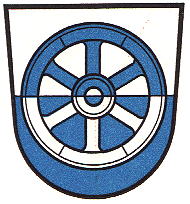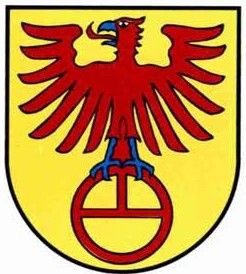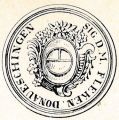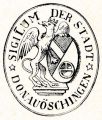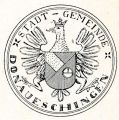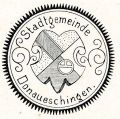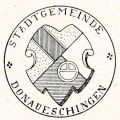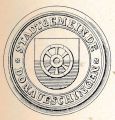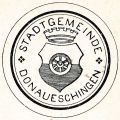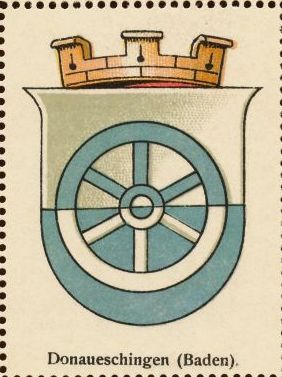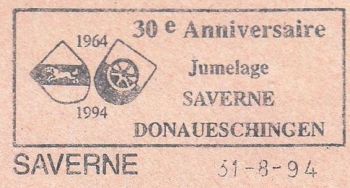Donaueschingen
This page is part of the German heraldry portal Deutsche Wappensammlung |
Heraldry of the World |
|
German heraldry:
|
Selected collector's items from Germany:
|
DONAUESCHINGEN
State : Baden-Württemberg
District (Kreis) : Schwarzwald-Baar Kreis (until 1973 Donaueschingen)
Additions : 1933 Allmendshofen; 1935 Aufen; 1971 Wolterdingen (1924 Zindelstein); 1972 Aasen, Grüningen, Heidenhofen, Hubertshofen, Pfohren; 1975 Neudingen
| German |
In von Silber und Blau geteiltem Schild ein sechsspeichiges Rad in verwechselten Farben. |
| English | No blazon/translation known. Please click here to send your (heraldic !) blazon or translation |
Origin/meaning
The arms were granted in 1895 and are based on the arms of the Esching family, who played an important role in the history of the town. The colours are those of the arms of the Princes of Fürstenberg, who resided in the city since 1723.
Before 1895 the local arms and seals showed a Sester (I don't know the English translation of this word, it seems to be an old round measuring device for grain) as the main symbol. This Sester seems to have been the old village symbol. The oldest known arms, from 1791, show only this Sester.
When Donaueschingen became a city in 1810, the eagle of the Counts of Fürstenberg (who ruled the city) was placed above the Sester.
| The arms from 1810 |
Later during the last century the eagle became the main symbol, with a breastshield, divided with the arms of Baden and the Sester. These arms were used until 1895.
The seals of the city:
| The arms in the Wappen-Sammlung (1900) |
The arms by Hupp in the Kaffee Hag albums +/- 1925 |
| Postal cancellation from Saverne |
On April 14, 1938 the city received new simplified arms, in blue a silver wheel. These arms have been used until October 1945 when the city returned to the arms from 1895.
Literature: Stadler, 1964-1971, 8 volumes.


